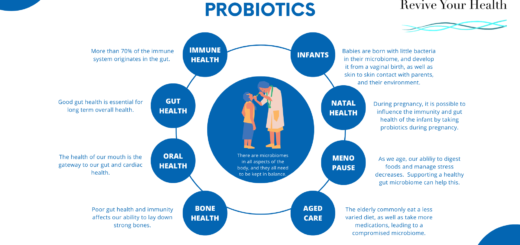Iron – Requirements and Supplementation
Red blood cells are the most numerous cells in the body, and we make around 200 billion daily. To do this, we use around 20-25mg of iron. This means that we need available iron on a daily basis. Iron is needed for red blood cells to transport oxygen in the blood, creating energy, and supporting enzymes to process other functions in the body. 65% of iron stored in the blood is haemoglobin (2-4gr), with about 10% stored as myoglobin, as enzymes and in the blood.
The average daily loss of blood is around 1.0mg for men and 1.4mg for women, and more during the menstrual cycle. To replace this, the recommended dietary allowance of iron is around 7-18mg per day for healthy adults, increasing up to 35mg in pregnant women.
Symptoms of iron depletion (not yet anaemia) can include fatigue and heart palpitations. Anaemia symptoms include shortness of breath, dizziness, headache, chest pain, and cognitive issues. Long term iron deficiency can display as sores at the corner of the mouth, spoon shaped finger or toenails, and a burning sensation in the tongue.
Ferritin:
Ferritin is a protein which is a measure of storage of iron, and this can indicate a surplus or deficiency of iron, so having a higher number is not actually a good thing. Until your surplus has dropped to lower than 30, you will not see the bone marrow iron levels drop.
When we look at iron levels, it is common for only ferritin to be tested. Whilst this can be an indication of the obvious levels, it is actually showing the surplus of iron in the blood. It is important to also test the full index, in order to see if the problem is in absorption of iron, compared to transport of iron around the body, or saturation in the blood. Serum ferritin cannot be used as a measure of the extent of iron deficient because values remain stable once the iron store is exhausted.
The normal healthy range of ferritin is usually in the range of 30-200ug/L, although some labs can use a lower range, down to 10-200ug/L. As this is a very broad range, I would regard the optimal level to be between 50 and 100. The average (as opposed to optimal) for a menstruating women is between 34-46ug/L. This can be a very individual thing, as there can be a low ferritin level, which can be healthy if their transferrin levels are low, and they are not showing need for more, then this may be enough for them. Those with high transferrin and low ferritin demonstrate that they are hungry for more iron. Less than 10ug/L indicates anaemia, less than 30ug/L indicates depletion, often seen as muscle weakness and neurocognitive effects. More than 100 can be inflammatory or indicate iron overload, and levels consistently high need to be investigated in case of haemochromatosis or other risks. When there is bacteria in the blood, the body will stop the transport of iron so that the iron does not feed the bacteria. This leads to higher levels being stored in the blood, hence high iron levels indicating inflammation or infection.
Less than 50ug/l can indicate low levels of iron, which can lead to anaemia, and whilst often attributed to diet low in iron, is often due to poor absorption or chronic unrecognised blood loss. Risk of iron deficiency is between high in younger women, about 40% between 16-25 years, with gradual reduction as women age.
Transferrin:
Transferrin is the transport for iron around the body, and when there is more transferrin, it means that the body is acting as though it needs more, and is sending out more transport to bring in more iron. This can be an individual issue, rather than looking at whether your levels meet the standard measure. The body will make more transferrin when needs are not being met in terms of iron. Levels under 2.6 is good for women. Low levels can means that you have enough iron, but also can be low when the liver is busy with other concerns.
During pregnancy, transferrin needs to be high, as this is the only way that the foetus gets iron. And for women who take OCP or HRT, this can trick the body into reacting as though it is pregnant, so can be trying to increase transferrin without genuine need.
If transferrin appears high in people with obesity, it can be that they have a genetic SNP, which leads for them to keep creating more transport for ferritin. This in itself can lead to overloading of iron in the pancreas, adding to the burden of diabetes, as well as the feeling in that person of the hunger for more.
Transferrin saturation:
This indicates the actual use of available iron in the blood. It measures how full is the transport element and typically they are 10-45% full. It can vary during the day, as will be lower in the afternoon, or higher after a meal. In a person who is inflamed, this will be lower, as it is not safe to use. In high levels, it can indicate there might iron dumping, as there can be excess of the needs in various organs and tissues. The common percentage is 25% in women, and in men is about 30%. Guidelines indicate that 35% is normal but this can appear to be on the high side, given the common average, particularly in women. More than 45% indicates polymorphism being predisposed to haemochromatosis.
Haemoglobin:
This is a protein found in red blood cells which indicates the blood’s ability to carry oxygen around the body. Around 65% of all iron in the body is in the haemoglobin. This is often measured at the Blood Bank, and low haemoglobin can display as fatigue and muscle weakness.
What influences absorption:
Absorption can be affected by genetics, chronic inflammation, or hepcidin, which is a protein which regulates iron absorption. It is suppressed in iron deficiency, allowing for increased absorption of iron, and it is increased in inflammation, as a host defence strategy to limit iron availability to microorganisms.
Obviously in order to absorb iron, it is essential to be eating foods high in iron. This can be particularly important during pregnancy and for young developing children.
Foods which can reduce iron absorption are tea and coffee, oxalic acid (chocolate, spinach, tea, some berries), whole grains, egg yolks. These foods can useful, but if supplementing with iron, it is important to take away from these types of foods, and away from calcium supplementation.
Testing of iron:
It is actually important to fast before an iron study. When you eat, you can change levels of ferritin or transferrin saturation, so in order to get a standard accurate result, it is worth doing this fasted. It is also important to stop iron supplementation around three days before testing. More accurate results will be achieved by testing in the morning, and avoiding heavy drinking or heavy exercise in the days before testing.
Other useful tests are FBE, ANA, ESR and CRP. WBC if slightly higher than normal can indicate inflammation. Where there is infection or high markers of inflammation, if ferritin is not high, it can indicate that that their iron levels are actually low, as it will be being stored while the transport of iron is being slowed, which is worth watching when the inflammation reduces.
Supplementation of iron:
- Start low dose, and increase, as the initial dose can reduce absorption, if starting in iron deficiency.
- Intermittent iron supplementation may be more effective. In a study using doses of 10-30mg, showing the intermittent dosing (alternative days, or 3 x week), there was reduced risk of anaemia and improved uptake of haemoglobin and ferritin.
- For vegans or vegetarians, it is more important to dose with iron daily.
- Plasma hepciden has a circadian increase over day, so it can be more effective to take in the morning, when hepcidin is lowest.
Forms of iron supplementation:
- ferrous iron is more bioavailable than ferric iron forms
- glycinate more superior than sulphate
- at any dose, taking sulphate leads to GI distress, to take, has to be less than 20mg/day
- bis-glycinate provides double absorption to sulphate at same dose, with lower GI effects
Co-Factors:
- vitamin A: inflammation reduces plasma .. helps to absorb iron
- vitamin C: helps with absorption and uptake for transferrin, storage and reduced GIT issues
- vitamin B2: women on OCP likely deficient in B2, also athletes, elderly, very common. Low B2 impairs absorption, and mobilisation of ferritin iron. B2 improved GIT villi, which helps iron absorption.



